Shawn Apostel, Ph.D.
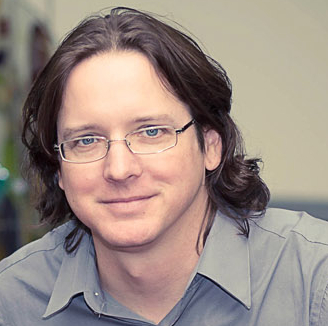 Assistant Professor / Instructional Technology Specialist / B.A. in Journalism, Toccoa Falls College; M.A. in Professional Communication, Clemson University; Ph.D. in Rhetoric and Technical Communication, Michigan Technological University
Assistant Professor / Instructional Technology Specialist / B.A. in Journalism, Toccoa Falls College; M.A. in Professional Communication, Clemson University; Ph.D. in Rhetoric and Technical Communication, Michigan Technological University
sapostel@bellarmine.edu
Shawn Apostel is an Assistant Professor of Communication and Instructional Technology Specialist at Bellarmine University where he provides support to faculty and IT to facilitate online and classroom instruction that incorporates technology and teaches visual, multimedia, and technical communication. His research interests include teaching with technology, digital ethos, e-waste reduction, learning space design, technical and visual communication. His work is published by IGI Global, CCDigital Press, Lexington Books, New Forums Press, Kairos: A Journal of Rhetoric, Technology, and Pedagogy, and Computers and Composition Online. He co-edited Sustainable Learning Spaces: Design, Infrastructure, and Technology and Online Credibility and Digital Ethos: Evaluating Computer-Mediated Communication and co-authored Teaching Creative Thinking: A New Pedagogy for the 21st Century.
Sustainable Learning Spaces: Design, Infrastructure, and Technology, co-edited with Russell Carpenter, Richard Selfe, and Kristi Apostel
Computers and Composition Digital Press/Utah State University Press
November 20, 2015
http://ccdigitalpress.org/ebooks-and-projects/sustainable
As campuses embrace the possibilities offered by new technology and multimodal composition, technology-rich centers, studios, and learning environments are being planned, constructed, and re-invented to address the needs of students and instructors in the digital age. This edited collection offers chapters that feature text, videos, audio files, and images that tell the stories of how learning spaces embrace sustainability as they move from vision to reality (e.g., sustainable construction, finances, pedagogies, staffing, and technology lifecycles). That is, we focus on how new centers and older centers both anticipate and reinvent themselves to meet the challenges of new technology and the pedagogical needs of learners and instructors, as well as how people are addressing and adapting to the environmental challenges of e-waste that these centers inevitably create.
Addressing Social Media Presence: Shifting from Place to Space in Career/Transfer ePortfolios
Journal of Faculty Development
May 1, 2015
Institutions of higher education are increasingly utilizing ePortfolio projects to allow students a space to showcase their work to their instructors, peers, and potential employers, and with the primary audience focusing on instructor or peer, the ePortfolio has worked well over the years. However, as the audience shifted more to potential employers, the self-contained ePortfolio should only be seen as one of many important online components for students to consider as they enter the workforce. Employers have grown savvy enough to conduct their own, informal searches on students using sites like Google, Bing, and Yahoo to gain a better understanding of what their potential hire will bring to a place of employment. Instructors who use ePortfolios to help students transition from study to the work force need to consider the online presentation of the student as well as the exhibit of a professional quality ePortfolio. This article showcases a “Digital Portfolio” class taught at small, private, liberal arts University in which the author encouraged students to create a marketable online presence along with a self-representation of work in the form of an ePortfolio. The author argues that combining the online, social-media presence with an ePortfolio collection allows students to create a well-rounded image of themselves and enables employers to observe the student's ability to navigate ever-shifting social media outlets. This article includes an overview of assignments, a sample syllabus, and student reflection of this class.
Book Review: Collaborative Approaches to the Digital in English Studies
Computers and Composition Online
November 2013
http://www2.bgsu.edu/departments/english/cconline/reviews/collaborative_review/index.html
As the Instructional Technology Specialist at Bellarmine University, I was delighted to read and review this important collection because it offers many helpful strategies and tools needed to conduct research in technology-rich centers and classroom environments, to teach in online learning environments, and to adjust teaching strategies to facilitate multiple learning styles.
Online Credibility and Digital Ethos: Evaluating Computer-Mediated Communication, co-edited with Moe Folk. IGI Global. December 2012. (Indexed by the Thomson Reuters Book Citation Index in 2014)
Digital technology plays a vital role in today's need for instant information access. The simplicity of acquiring and publishing online information presents new challenges in establishing and evaluating online credibility.
Online Credibility and Digital Ethos: Evaluating Computer-Mediated Communication highlights important approaches to evaluating the creditability of digital sources and techniques used for various digital fields. This book brings together research in computer mediated communication along with the affects digital culture and online credibility.
“Prezi Design Strategies,” in Kairos: A Journal of Rhetoric, Technology, and Pedagogy, (http://kairos.technorhetoric.net/18.1/disputatio/apostel/index.html), Volume 18, No. 1, 2013
I decided to re-assign myself a project that Dr. Kathleen Yancey gave me 10 years ago at Clemson using a book that was out at the time. Bruce Block’s (2001) The Visual Story: Seeing the Structure of Film, TV, and New Media breaks pictures into components: space, line, shape, tone, color, movement, and rhythm, which are all part of what makes an effective Prezi. The resulting Prezi was selected as the Best Educational Prezi in 2013.
“In My Opinion: What the 21st Century Classroom Looks Like,” Vidyo Blog, April 11, 2013.
Welcome to learning in the 21st Century. Today, students learn from peers, an online community, and experts who share their knowledge through traditional and online publishing resources. University students I work with have access to more information through their cellphones than I did in my entire library as an undergrad.
Teaching Creative Thinking: A New Pedagogy for the 21st Century, co-authored with Russell Carpenter, Hal Blythe, and Charlie Sweet, New Forums Press, January 2013.
While many books talk about creativity and provide the justification for adding creative thinking as a student learning outcome, this book focuses on applying creativity to the teaching and learning process. The authors ask, “does anyone truly believe the world’s problems are going to be solved by students with only a high proficiency in common core competencies?”
With student learning outcomes as a goal, we must rethink teaching and learning to include creativity. Posed for the 21st-Century learner, their new paradigm, Mentor-from-the-Middle, replicates scholarly inquiry by developing a scholarly frame of mind. The teacher assumes new roles in this paradigm of scholar, mentor, facilitator, coach, model, and critical reflector. These roles in turn combine to help transform the learner into an active creative thinker.
“Communication Center Ethos: Remediating Space, Encouraging Collaboration,” co-authored with Russell Carpenter, in The Communication Centers Movement in Higher Education: New Directions from the Center, Ester Lee Yook and Wendy Atkins-Sayer (Eds.) Lexington Books, 2012.
In the Noel Studio, small rooms—breakout spaces and presentation practice rooms—facilitate work on oral communication with consultants, while larger rooms like the greenhouse and invention space foreground creative invention as people outside the group contribute ideas. Our research involves the usage of larger and smaller rooms to see how these spaces facilitate feedback to groups and individuals during consultations. In this chapter, we offer results and discussions of research using control and experimental groups from communication classes to investigate the relationship between space and oral/group communication.
Kyle S. Barnett, Ph.D.
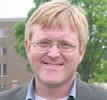 Associate Professor / B.A., English and Philosophy, Indiana University-Indianapolis; M.A., American Culture Studies, Bowling Green State University; Ph.D., Radio-Television-Film, University of Texas
Associate Professor / B.A., English and Philosophy, Indiana University-Indianapolis; M.A., American Culture Studies, Bowling Green State University; Ph.D., Radio-Television-Film, University of Texas
kbarnett@bellarmine.edu
“Furniture Music: The Phonograph as Furniture, 1920-1935,” Journal of Popular Music Studies. November 2006.
To gain acceptance in the home, the public phonograph was repackaged as furniture. This article recontextualizes the recording industry via its largely forgotten connection to the furniture business. Many of the emerging record companies of the era were tied to parent companies new to the recording business and rooted in the furniture industry. In a complex cultural circuit linking producers, audiences and intermediaries, the phonograph came to be understood not as public amusement but as an edifying presence in the home. The industry appealed to women as stewards of the home, appealing to them in women’s magazines, in which the machine’s educational potential and interior design aesthetics were debated. As among the first media technologies to be adopted into the home, the phonograph’s transformation serves as a way to emphasize the larger history of media technologies’ shifting role within everyday life.
“The Recording Industry’s Role in Media History,” Convergence Media History. Janet Staiger and Sabine Hake, eds. New York: Routledge, 2008.
Despite media history’s increasing attention to the cultural aspects of the film, television and radio industries, such research on the recording industry remains largely absent. This article asks: what might be gained from an approach that would combine media history’s attention to industry history with the focus of cultural industry studies on organizing principles and cultural practices? Using the Gennett Records label as a case study, the methodological approaches are combined, with a focus on scouting, company structure, recording and record selection. Finally, the article contextualizes the recording industry’s recent crisis in what was arguably an equal or greater such crisis during the Great Depression,” repurposing an old saying to argue “everything old is new again.” An awareness of recording industry history would allow dismissal of claims that the recent crisis was unprecedented and unique. Similarly, media studies should pay greater attention to the recording industry, both in its role as content provider for other media industries and a key media industry on its own.
“The Selznick Studio, ‘Spellbound,” and the Marketing of Film Music” Music, Sound, and the Moving Image. Volume 4, Issue 1, Spring 2010.
This article examines the Selznick Studio’s attempts at marketing film music, beginning with 1939’s Gone With the Wind and culminating in Miklós Rózsa’s Academy Award-winning score for 1945’s Spellbound. A collaboration between Selznick’s Vanguard Productions and ARA Records. The release is examined here as a case study of film music marketing (music culled from the actual score, not pop songs ‘inspired by the film’), all contextualized in relation to changes in the relationship between film studios and recording companies during the 1940s and ’50s.The Selznick/ARA relationship is juxtaposed with later successful efforts in cross-promotion by the Decca and MGM record labels in the ’50s and ’60s. Vanguard and the Selznick Studio’s insufficient understanding of the recording industry foreshadows Hollywood practices to come, and the Spellbound album stands as a noteworthy early experiment, and an argument for film music’s importance apart from its relationship to the filmic image.
“Record Men: Talent Scouts in the U.S. Recording Industry, 1920-1935,” Making Media Work: Cultures of Management in the Entertainment Industries. New York: NYU Press, 2014.
In the years following World War I, many new companies with no previous involvement in the recording industry got into the business. After trying to compete with larger established labels (Victor, Columbia, Edison), these companies began to seek out niches and turned to trusted employees who became talent scouts on their behalf. It was these scouts that sought out the largely unrecorded vernacular music that became the key genres of early 20th century American music: jazz, blues, and country. These talent scouts, most commonly white and male, negotiated a variety of social and cultural realities in relation to their own subject positions. Scouts used existing societal narratives about race and class to sell the music they recorded, informing the narratives they used and the advertised that appeared in the press. Decades later, the scouts that were involved were still busy articulating their own legacies in terms of what the work meant to them and to the larger impact on American popular music, via their roles as cultural producers.
Gail R. Henson, Ph.D.
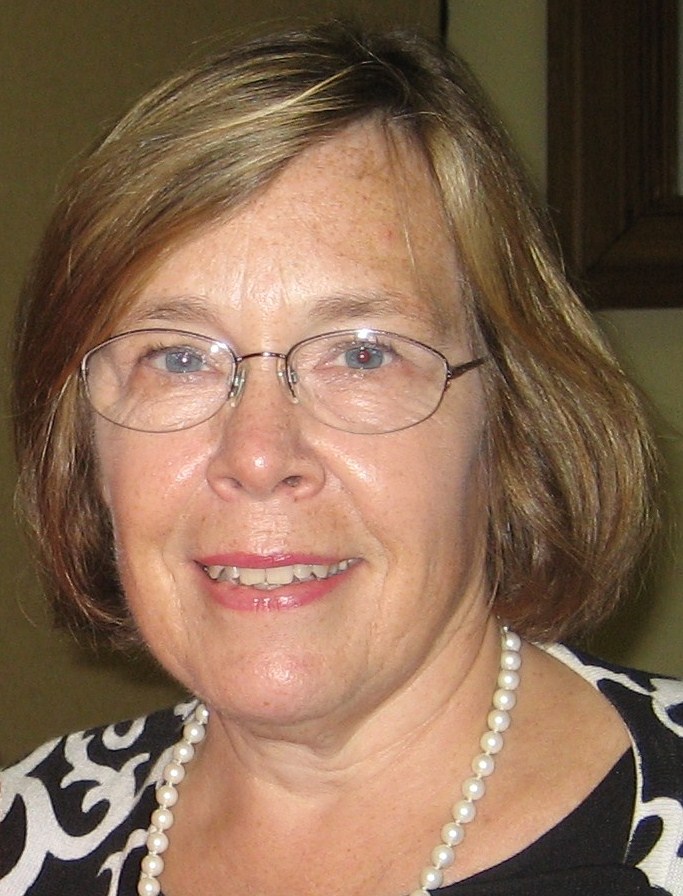 Professor / B.A., English, DePauw University; M.A., English, University of Louisville; Ph.D., English, University of Louisville. Additional studies at St. Mary's College of Divinity, University of St. Andrews, Fife, Scotland; Ernie Pyle School of Journalism, Indiana University.
Professor / B.A., English, DePauw University; M.A., English, University of Louisville; Ph.D., English, University of Louisville. Additional studies at St. Mary's College of Divinity, University of St. Andrews, Fife, Scotland; Ernie Pyle School of Journalism, Indiana University.
ghenson@bellarmine.edu
“Refugee Relief Act.” (The Encyclopedia of Multicultural America. Thousand Oaks, CA: SAGE Press, 2013)
The Refugee Relief Act, also known as the Emergency Migration Act, was signed by President Dwight D. Eisenhower August 7, 1953. The act made provisions to admit refugees who could not be accommodated by quotas prescribed by U. S. immigration laws. This was a significant step in US immigration policy, the first non-quota refugee law. It provided for the admission of 209,000 refugees to the US before 1956, setting factors for immigration in such categories as refugees, German expellees, and escapes. It provided for the admissions of persons with family members in the US (family reunification), those with the status as a persecuted person (religion, race, personal opinion), occupation, and those unable to return home in a communist country. It addressed humanitarian and political goals and provided legal and infrastructure means of accommodating refugees, serving as a vital part of the story of U.S. refugee and immigration legislation.
“Time.” (The Encyclopedia of Multicultural America. Thousand Oaks, CA: SAGE Press, 2013)
A consequence of the increasing racial and ethnic make-up of the U. S. population is an inevitable diversity in understandings of time and its value. The implications for a multicultural society with different views of time are great. The major conflicting conceptions of time observed are monochronic and polychronic, terms first used by Edward Hall in his 1959 work The Silent Language. The dominant Caucasian culture I the United States uses monochronic or “M” time, perceiving time as individual units on a linear continuum. In M-time, there’s a set beginning and end to an event, and deviations from that set time can lead to conflict. The more collectivist cultures in the United States, such as Asian, Hispanic-Latino, Native American, and various immigrant/refugee groups from Africa organize their lives by polychronic—or P-time. P-time conceptualizes time as a simultaneous concurrence of activities with human relationships taking precedence over time on task. Different cultural variations in the perception of time lead to conflicts over being on time in the workplace, for medical appointments, for attendance at school, and social events.
“Ethnic Media.” (The Encyclopedia of Multicultural America. Thousand Oaks, CA: SAGE Press, 2013)
Ethnic media in the United States number close to 3,000 organizations. Ethnic media provide vital cultural, political, and social resources for the ethnic and cultural groups served. They also constitute a significant form of economic competition for mainstream media. They have played a vital role in U. S. social history by permitting their readers, listeners, and viewers a way to stay in touch with home countries, learn about the communities in which they live, and connect with diverse cultures. Ethnic media in the United States begin with the publication in 1732 of the Philadelphische Zeitgung and the 1733 New York Journal, the latter making publisher John Peter Zenger famous for his landmark case involving seditious libel and freedom of press. African American media started in 1828 with Freedom’s Journal and 1830 with Frederick Douglass’s North Star, abolitionist newspapers. Ethnic media have reflected the immigrant groups they serve, such as Jewish, Irish, German, Chinese, Mexican, Puerto Rican, Vietnamese. Today Spanish-language media include 832 Spanish-language newspapers, Univision, the largest Spanish language TV network and fifth-largest TV network in the United States, and Telemundo, radio stations, and Univision Interactive Media’s national Noticias. Ethnic media provide vital educational roles for their audience, advocacy and rallying points for public policy change related to immigration issues, and ways of transmitting cultural heritage as well as maintaining and strengthening cultural identity.
“Age and Ethnic Diversity.” (The Encyclopedia of Multicultural America. Thousand Oaks, CA: SAGE Press, 2013)
The 2010 U. S. Census illustrates the changing face of the United States. The diversity of the United States has made the tapestry of cultures robust. One third of the population is minority; by 2030, the United States will be a minority-majority culture. The most significant growth is in the Hispanic-Latino population, which constitutes 16.7 percent of the population. At every age and state and life, the increase in racially and ethnically diverse population affects cultural and religious institutions within the United States, including education, political apportionments, healthcare and access to it, religious institutions, housing patterns, and employment. The 2010 Census figures show the numbers of people 65 and older are increasing at a higher rate for the Hispanic and Asian-American populations. The percentage of elderly persons with income below 200-percent of the poverty threshold is almost 35 percent. The minority elderly are considered to be at risk in a form of double-jeopardy with regard to their quality of life and education. Minority elderly may have been excluded from by segregation and other cultural barriers from educational attainment or access to employment that would provide for economic stability in old age.
The Gentle Agitator. Lessons from the Life of Dr. Samuel Robinson. Louisville: Bellarmine University Press, 2008.
This oral biography chronicles Dr. Robinson’s legacy as a gentle, but powerful figure in the history of civil rights in Kentucky. Through his narrative, we see glimpses into the segregated world in which he was born and raised in Memphis in the 1930s and his thirty-year involvement in education for African Americans and disadvantaged youth at the Lincoln Institute, the Jefferson County Public Schools, the Lincoln Foundation, and the Kentucky Board of Education. In each of his stories, the listener hears lessons learned along Dr. Robinson’s way. Dr. Robinson’s contribution to the history of Civil Rights in the South begins in Tennessee and continues through his career in education and public service to the Commonwealth of Kentucky.
Moira O’Keeffe, Ph.D.
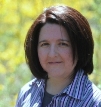 Assistant Professor / B.A., Liberal Arts with a concentration in Media Studies, New School for Social Research; M.A., Broadcasting, Telecommunication and Mass Media, Temple University; Ph.D., Annenberg School for Communication, University of Pennsylvania
Assistant Professor / B.A., Liberal Arts with a concentration in Media Studies, New School for Social Research; M.A., Broadcasting, Telecommunication and Mass Media, Temple University; Ph.D., Annenberg School for Communication, University of Pennsylvania
mokeeffe@bellarmine.edu
O'Keeffe, M. (2013). Science fiction and the big questions. Journal of the British Interplanetary Society, 66(7-8), 202-207.
Advocates of space science promote investment in science education and the development of new technologies necessary for space travel. Success in these areas requires an increase of interest and support among the general public. What role can entertainment media play in inspiring the public—especially young people—to support the development of space science? Such inspiration is badly needed. Science education and funding in the United States are in a state of crisis. This bleak situation exists during a boom in the popularity of science-oriented television shows and science fiction movies. This paper draws on interviews with professionals in science, technology, engineering and mathematics (STEM) fields, as well as students interested in those fields. The interviewees were asked about their lifelong media-viewing habits. Analysis of these interviews, along with examples from popular culture, suggests that science fiction can be a valuable tool for space advocates. Specifically, the aspects of character, story, and special effects can provide viewers with inspiration and a sense of wonder regarding space science and the prospect of long-term human space exploration.
O'Keeffe, M. (2013). Lieutenant Uhura and the drench hypothesis: Diversity and the representation of STEM careers. International Journal of Gender, Science, and Technology, 5(2), 4-24.
Women are under-represented in disciplines related to science, technology, engineering and mathematics (STEM). African Americans, Latinos, and Native Americans are also under-represented in these careers. Communication scholars have considered the role that media representations may play in this imbalance, as well as whether or not a shift in how STEM careers are portrayed in the media could help to address it. In this audience-based study, STEM professionals and students interested in STEM-related careers were asked about their lifelong media consumption. Responses from people from under-represented populations are analyzed. Their comments provide insights into the influence of the “symbolic annihilation” of women and minority populations in entertainment media. The interviewees’ responses to specific characters provide support for Greenberg’s drench hypothesis (1988), which suggests that one powerful portrayal can offset the overall dearth of positive characters in the media landscape. In particular, the character of Lieutenant Uhura from the original run of Star Trek was frequently noted by female respondents as an influential character.
Michael G. Strawser, Ph.D.
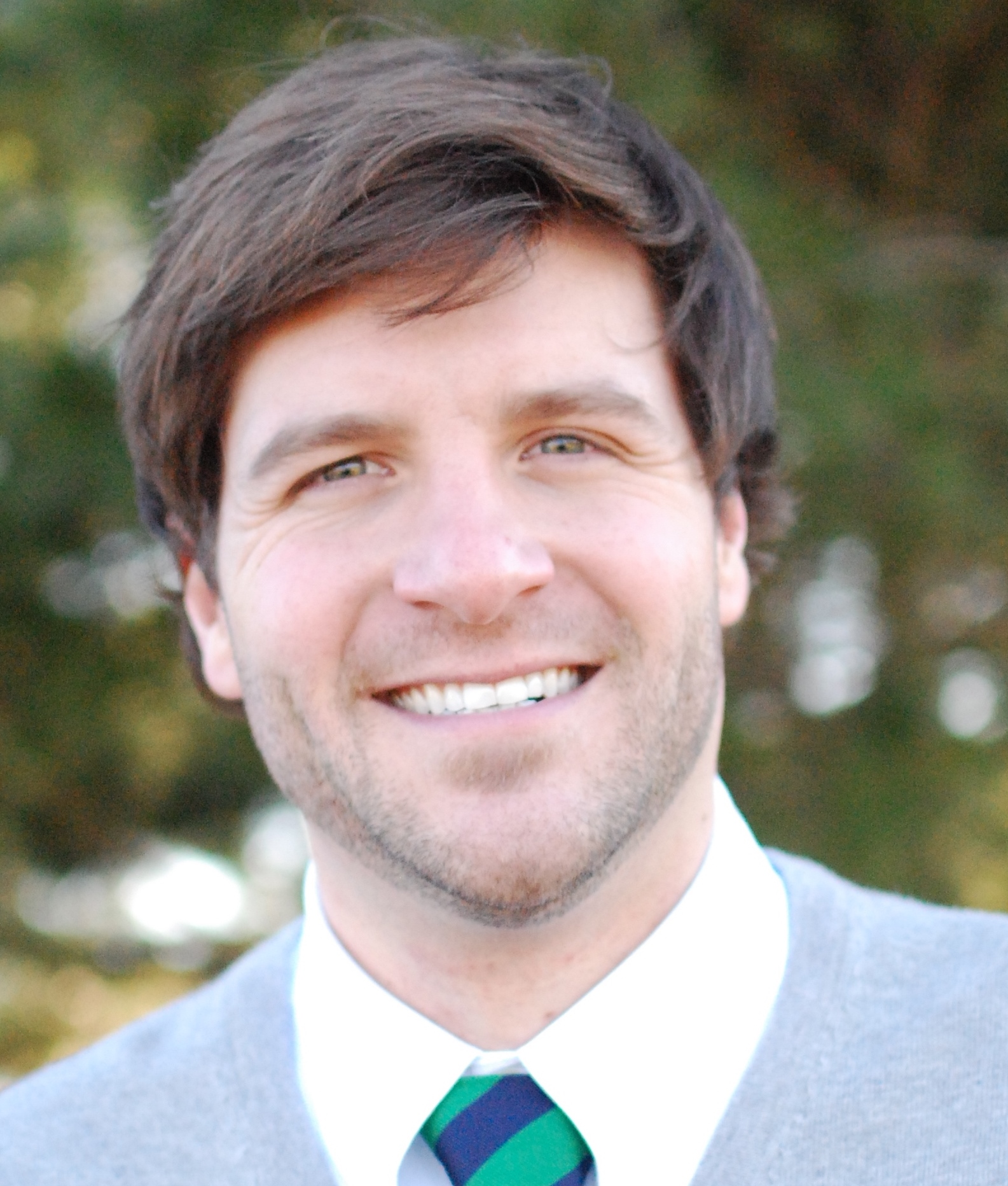 Assistant Professor/Instructional Designer for Online Projects/B.A. in Comprehensive Communication, Cedarville University; M.A. in Communication and Leadership, Gonzaga University; M. Div. in Christian Ministry, Southern Baptist Theological Seminary; Ph.D. in Communication, University of Kentucky
Assistant Professor/Instructional Designer for Online Projects/B.A. in Comprehensive Communication, Cedarville University; M.A. in Communication and Leadership, Gonzaga University; M. Div. in Christian Ministry, Southern Baptist Theological Seminary; Ph.D. in Communication, University of Kentucky
mstrawser@bellarmine.edu
Michael Strawser is an Assistant Professor of Communication and the Instructional Designer for Online Projects at Bellarmine University. Michael provides support to faculty to facilitate effective online pedagogy. His research interests include instructional and organizational communication as well as distance learning. His work has been published by Communication Education, Kentucky Journal of Communication, Florida Communication Journal, and Hybrid Pedagogy.
Strawser, M. G. (2015). Exploring Innovation. Hybrid Pedagogy, August, 2015.
The 21st-century faculty member is faced with a challenging task. Content must be relevant, experiential, and engaging for the 21st-century learner. As such, this places an onus on classroom creativity and innovation. Hybrid pedagogy has become an avenue for multifaceted instructional strategies and interactive instructional design theoretically enhancing the best of both the physical and virtual classroom spaces. As administrators clamor for relevance in an evolving education landscape, the concept of a learning space that combines the on-ground and online classroom is appealing.
Book, C. & Strawser, M. G. (2015). A Writing Center Collaboration with a Hybrid Introduction to Public Speaking Course. Florida Communication Journal, 43, 105-108.
This manuscript overviews the class which integrates an alternative physical space for writing instruction, specifically a variation of the Studio Approach by Rhonda Grego and Nancy Thompson (2007), into a hybrid public speaking course. The course, taught by a Communication scholar, uses written assignments and the writing/research process to support the primary goal: oral communication proficiency.